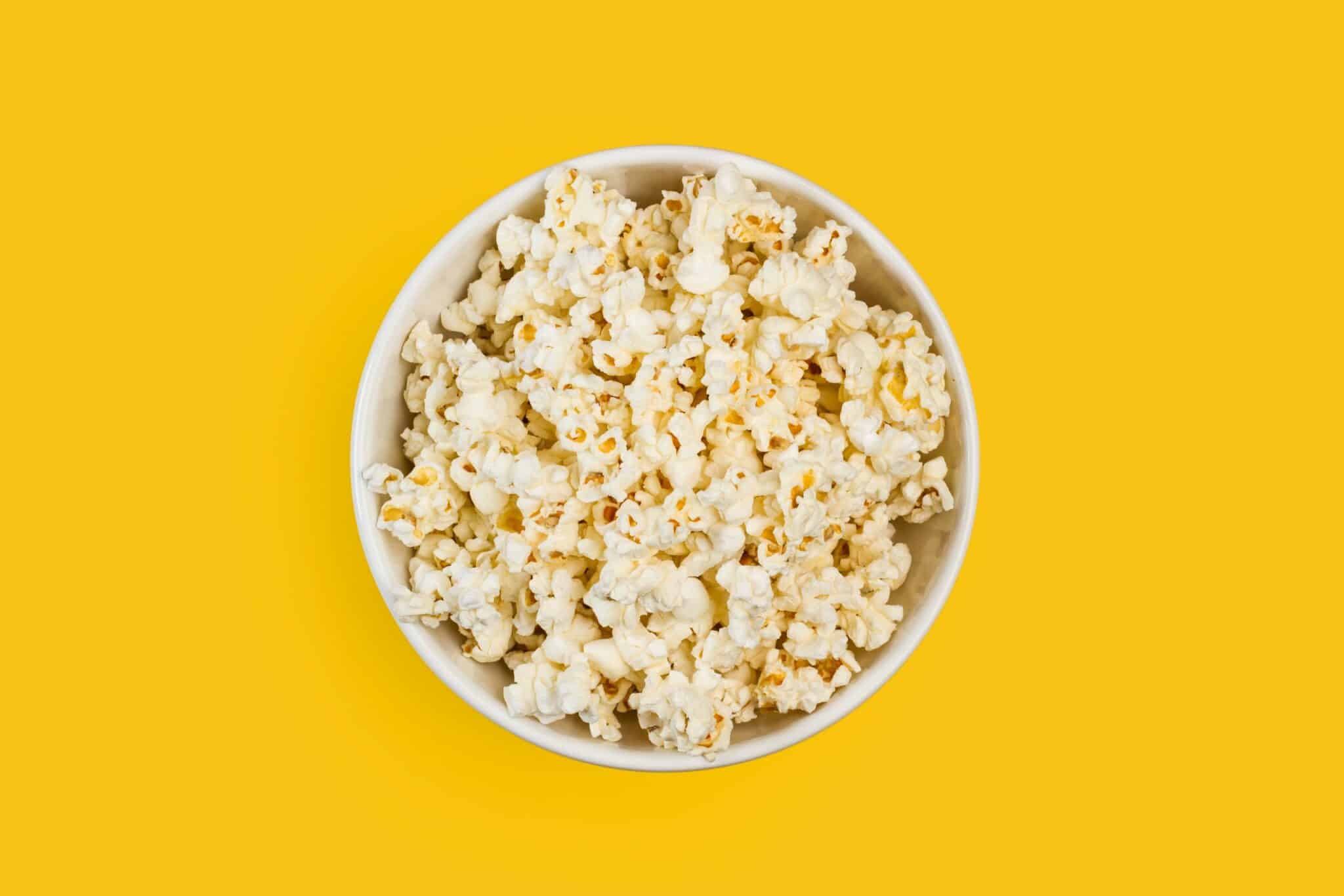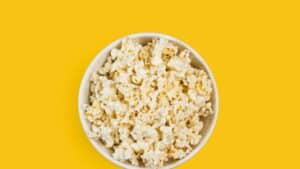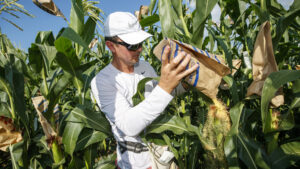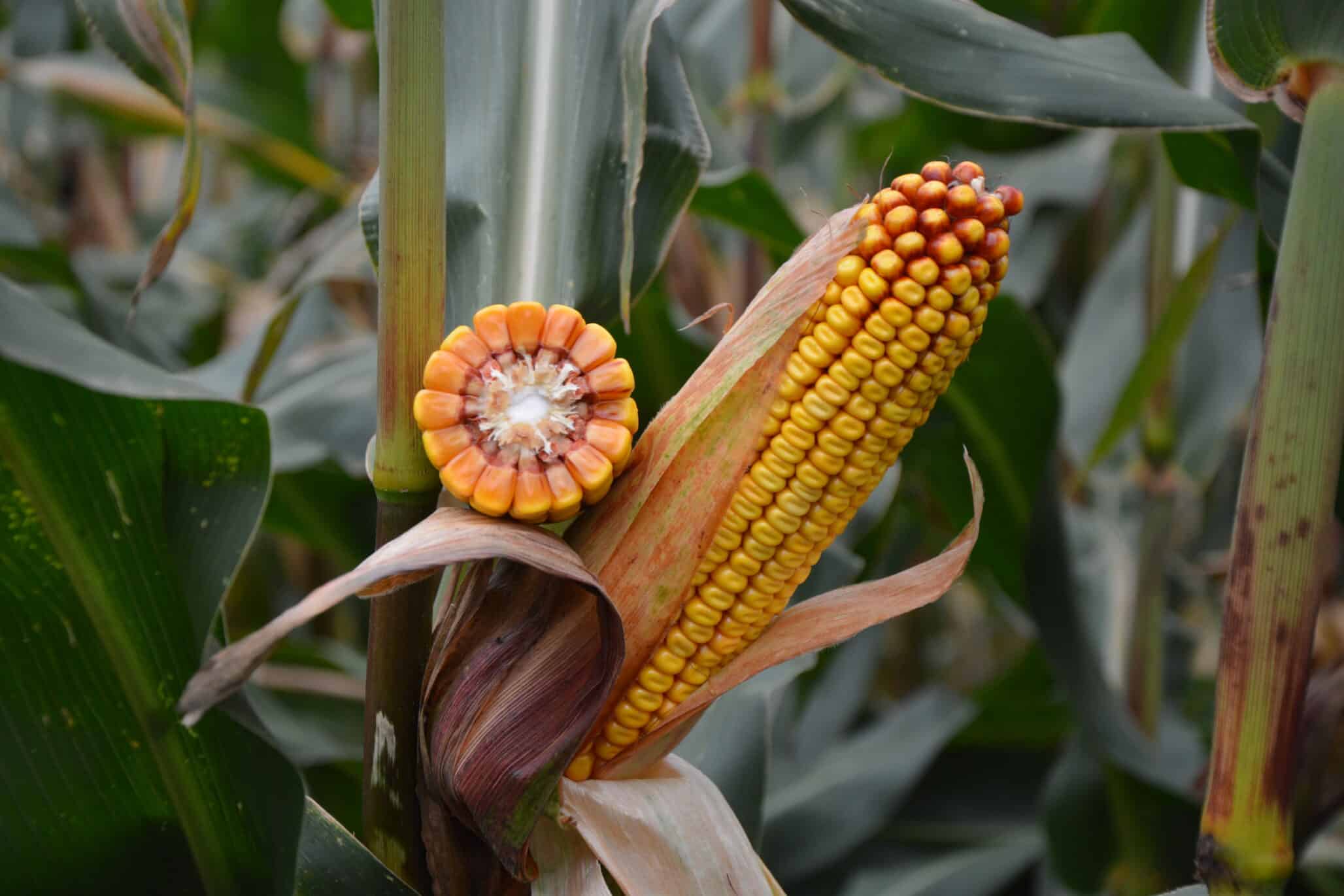Experts chat about the history and breeding of our favorite movie food: popcorn.
Popcorn is a unitasker. It doesn’t have a long list of functions to justify its existence. It serves only one purpose: it’s snack food. But it serves that function very well.
Popcorn is perhaps nature’s best snack treat. It is a healthy, whole grain, relatively inexpensive, non-GMO food that tastes great, especially when dressed with melted butter and a good sprinkle of salt. While popcorn is a great snack, it is not the perfect crop. Commercial growers want plants with better standability and more yield per acre. Movie theatre concessionaires want more popped volume per pound of grain and nutritionists want improved protein balance. Notwithstanding, popcorn has survived the test of time.
Scholars agree that popcorn originated in the Americas. Popcorn grains estimated to be more than 1,000 years old were found on the east coast of Peru. A 1,000-year-old popped kernel was found in a dry cave inhabited by predecessors of the Pueblo Indians in Southwestern Utah. Popcorn’s modern era as a favorite American snack was launched in 1893 at the New York World’s Fair. Street vendors, by the 1920s, with their steam or gas-powered poppers, were a common sight at fairs, parks and expositions.
In 1934, the Minnesota Agricultural Experiment Station released Minhybrid 250, the first hybrid popcorn for commercial production. This initial release was narrowly adapted to the northern U.S. corn belt. By the 1940s, more widely adapted hybrids had been developed by Indiana and Kansas Agricultural Experiment Stations in cooperation with the U.S. Department of Agriculture’s Bureau of Plant Industry. Modern plant breeders, concentrated in the heart of the U.S. Corn Belt, continue their quest to develop improved popcorn hybrids.
“The whole focus of the popcorn industry is consumer-driven,” says Sterling Weeda, plant breeder at Schlessman Seed Company, Milan, Ohio. “Per acre yield for farmers is important and not to be neglected, but how it pops, how well is expands, what kind of popped kernel flakes it produces, how well it eats and how well it holds its shape are qualities that can over-ride yield when commercial popcorn users select hybrids for production.”
Brad Thada, a popcorn breeder at Weaver Popcorn Hybrids, New Richmond, Ind., agrees. “Nutrition is seldom an objective of a private breeding program. From a dollar and cents perspective, it would be hard to recover the cost of a nutrition-focused, popcorn breeding program. Public breeders may find some interest in researching the genetic background of popcorn vs. dent corn. Nutrition is not a high consideration for private breeders. There are already many other more important traits.” Popcorn is already a healthy snack. Anybody can enjoy it, but it is not regarded as a significant component of people’s diets like corn or wheat or rice.
Breeder Challenges
There are 250,000 acres of popcorn vs. 92 million of dent acres planted annually in the United States. The size of the popcorn crop limits the resources available to advance popcorn breeding programs. Private breeding programs are generally funded with very stringent budgets. That is one challenge.
From a breeding perspective, popcorn presents some competing objectives that are inherent in the character of popcorn genetics. As grain yield increases, popping expansion tends to decrease. The shape and size of popcorn kernels influence how they pop and behave in the popping kettle. When breeders look to increase yield components such as the number of rows on an ear, for example, they know more rows on the ear shrink kernel size, which affects popping expansion.
Among plant breeders, popcorn has a notorious reputation for being prone to stalk lodging. Here again, there is an apparent inverse linkage between high expansion and stalk strength and lodging. A hybrid that stands perfectly and yields 800 lbs per acre with a 50x expansion ratio would be ideal, but every high-expansion hybrid seems to have weak stalk strength or some other agronomic flaw. If it pops well and stands well but has a hard hull that gets stuck in people’s teeth, consumers will never buy that hybrid again. When Weeda suggests that a white hybrid has the best eating qualities, many of his customers are not interested. In the United States, only 10% of the popcorn is white. Social perception and cultural traditions stand against white popcorn, although it may be the best eating popcorn. In Europe and many other countries around the world, the perception against white popcorn is so strong that it is not available on the market.
“If my competitors and I each roll out one or two new hybrids a year, there may be a total of 12 new hybrids trying to fill all the world’s niche markets,” Weeda says. “It is quite different than field corn. Field corn breeders can justify tailoring a new hybrid to a specific geographic area. We distribute our popcorn seed globally. Each hybrid has to be versatile enough to handle the diversity found in several production regions. It is a unique breeding challenge, especially with today’s tight budget challenges.”
While the overall agronomic priorities for popcorn are similar to those for dent corn (stalk quality, yield, and disease resistance), ear quality and kernel size, shape and color can become formidable factors in the success of a hybrid.
“We have seen improved agronomic qualities over the years, including improved expansion, but we most want high popping expansion so the popped flakes will fill up a lot of space,” Thada explains. “The movie theater concessionaire, for example, wants to have more expansion so a pound of corn will yield more bucket of popcorn to sell at the snack counter. Individually, mushroom kernels have good expansion. But when popped, mushroom corn is put into a movie patron’s bucket, it packs more tightly, reducing the yield of filled containers. The round mushroom-style flakes are best suited for caramel-coated popcorn.”

Art or Science?
With its sometimes competing, specialized objectives, what does it take to be a good popcorn breeder? Plant breeders of all ilk are part scientist, part artist. A certain amount of technical expertise is needed for a plant breeder to plan and develop a breeding program. Conversely, science alone lacks the intuition that is often needed for a breeder to know which new cross to keep and which to discard. Science alone cannot predict which plants farmers will favor and which ones they will ignore simply because they “just don’t look right.” Is art or science more important for a successful popcorn breeder?
“Yes, and yes,” says Thada. “There is a place for art while we are integrating more non-GM technologies into our breeding pipeline. Bringing technologies into popcorn programs has lagged behind its use in dent corn. A lot of the research in the entire maize industry has been with dent only because of the relatively small acreage of popcorn production. Over the past few years, we have been basing our breeding decisions more and more on the use of data. Popcorn breeding can never be completely science-driven. There will always be a place for art in the process. You have to look at a plant and say these are favorable characteristics. Sometimes you cannot put your finger on what you need until you see it. From the science perspective, you have to be asking the right questions when you are out there in the field making pollinations and selections. That is all part of the breeding program. I do not think you can do all that with data alone. Even while we are experiencing more use of science, there is a place for art.
“Science and techniques are tools for a plant breeder, much like different kinds of brushes and paints are tools in the hand of a painter. Just because a painter has more or better tools, a painter still has to have the art to become an artisan and create beautiful paintings. That is how it works for breeders. You cannot rely only on your tools to make a great hybrid. I cannot imagine a successful breeder being trained in the best classical breeding who would lack the artistic skills needed to make quality judgments in the field. Taking away the tools provided by science would make it much more difficult for breeders to develop the new varieties and hybrids needed to feed the world. We need the art component to interpret and use science’s tools.”
As an industry, breeders have been slow to adopt because they lack the financial incentives to support investment in new technology. Gradually, popcorn breeders are using more of the tools used by dent corn except, of course, popcorn is non-GM. Doubled haploid lines are a more recent development.
“We did not have a haploid inducer to bring improved genetics into popcorn through the use of DH lines because of a cross incompatibility of popcorn with dent, now we do. We have to use anything available out there to make us more efficient even if we are a bit slower in adopting new technology,” according to Max Robbins, Ag Alumni Seeds director of Research and Testing, Romney, Ind. “In addition to the agronomic traits important for dent corn, kernel size, color, flake types, among others, are also important traits. Paying attention to our customers‚Äô preferences is how we decide whether to keep or discard a hybrid. The result is often a slower rate of hybrid turnover than we have with dent hybrids. Listening to our popcorn customers is part of the art of being a popcorn breeder.”
The Ideal Popcorn Hybrid 
The idea of an ideal popcorn hybrid has not changed much over the years. Getting more yield and higher expansion are the two most important traits. White popcorn is more expensive because production yields are lower, at least in the field, and many growers do not want to grow it.
According to Robbins, theatre operators know exactly how many boxes to expect from a pound of popcorn. “In making new selections, we evaluate for many traits, including disease resistance, stalk strength, and kernel characteristics, but still, we look mainly at yield and expansion. Some customers have a preference for specific flake size. Small popped flakes do not generally have the same visual appeal as large flakes. The largest market is for hybrids with yellow endosperm and the heavy caramel coatings used to make candy popcorn work best on the big, ball-type flakes.”
“We all can say we have the best hybrid, but we also know there is no perfect hybrid. Each has a flaw of one sort or another,” Weeda says. “Everyone wants the best eating popcorn, but cultural preferences can get in the way. When I suggest that a white hybrid has the best eating qualities with a thin hull that breaks apart when popped, they are not interested. In the United States, only 10-15% of the popcorn is white. Social perception and culture stand against white popcorn, although it may be the best eating popcorn.”
“Because there are so many people that prefer the eating characteristics of white popcorn, I would make a white hybrid butterfly flake that expands and yields well,” Thada says. “I would like it to have lower ear placement and sturdy stalks that stand well going into harvest. We already have those traits available. It is just a matter of being able to combine them into one hybrid. I am working toward that goal.”













